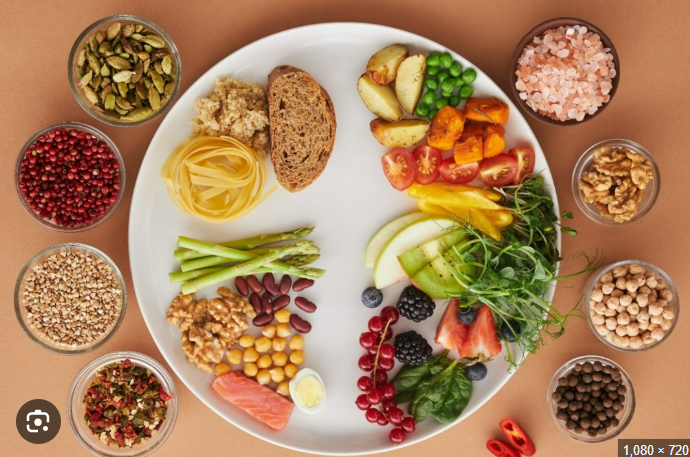
Food is much more than sustenance. It’s culture, experience, memory, and creativity. When thoughtfully paired, ingredients can enhance one another, turning a good meal into an unforgettable one. The art of food pairing goes beyond simply matching flavors—it involves aroma, texture, color, and even temperature. In this guide, we’ll delve into the science and creativity behind food pairing and explore combinations that can take your meals to the next level.
Understanding the Science Behind Food Pairing
At its core, food pairing is rooted in chemistry. Every ingredient is made up of hundreds of chemical compounds that influence its aroma and flavor. When two ingredients share key flavor compounds, they’re likely to work well together.
This is known as the flavor pairing theory, which suggests that ingredients with similar molecular profiles tend to complement one another. For instance, both strawberries and white chocolate contain methyl butyrate, a compound responsible for fruity, creamy notes. That’s why they taste so harmonious together.
On the other hand, contrast pairing focuses on balance—such as sweet and salty, or creamy and crunchy. Think of prosciutto wrapped around melon, or a drizzle of balsamic over vanilla ice cream. These combinations work because they play with contrasts in taste and texture, awakening multiple senses at once.
The Five Basic Tastes
Before diving into combinations, let’s revisit the five basic tastes:
- Sweet – sugar, honey, fruits
- Sour – citrus, vinegar, yogurt
- Salty – cured meats, sea salt, soy sauce
- Bitter – kale, dark chocolate, coffee
- Umami – tomatoes, mushrooms, cheese, miso
Each of these tastes can enhance or balance the others. Great food pairing considers how these interact on the palate.
Classic Food Pairings That Work Every Time
Some combinations are universally recognized for their complementary nature. Here are some tried-and-true classics that have stood the test of time.
1. Tomato and Basil
This Italian staple thrives on flavor synergy. Tomatoes are rich in umami, while basil brings a fragrant, peppery contrast. Add mozzarella, and you’ve got a Caprese salad—an example of perfect harmony.
2. Apple and Cheddar
Sweet-tart apples paired with sharp cheddar create a contrast in flavor and texture. This combo is popular in pies, sandwiches, or as a standalone snack.
3. Peanut Butter and Banana
Creamy peanut butter meets sweet, soft banana—an energy-packed, protein-rich duo with a nostalgic twist.
4. Chocolate and Raspberry
The bitterness of dark chocolate meets the tart brightness of raspberry. Together, they form an elegant balance of richness and zing.
5. Honey and Goat Cheese
Sweet, floral honey paired with tangy, earthy goat cheese is a great topping for crostini or fresh salads.
Modern Pairings That Might Surprise You
Thanks to advancements in flavor science and the work of chefs and molecular gastronomists, new and unexpected pairings are becoming culinary gold.
1. Strawberry and Tomato
Both fruits (yes, tomatoes are fruits!) share similar flavor compounds, especially in summer when they’re in peak season. Try them together in a salad with balsamic and basil.
2. White Chocolate and Caviar
This luxurious combination plays on creamy sweetness and briny saltiness. It’s decadent, unexpected, and increasingly featured in high-end dining experiences.
3. Beetroot and Dark Chocolate
Earthy beets complement the bitterness of dark chocolate. This duo works beautifully in cakes, truffles, or even savory sauces.
4. Pineapple and Blue Cheese
The tropical sweetness of pineapple balances the pungent bite of blue cheese. Try it on a flatbread or in a gourmet salad.
5. Avocado and Grapefruit
Creamy avocado pairs wonderfully with the tart and slightly bitter notes of grapefruit, especially in a citrusy salad with fennel or mint.
Global Inspiration: Pairings from Around the World
Each culture has its own unique flavor pairings that reflect local ingredients and traditions. Here are some favorites from across the globe:
1. Mango and Chili (Mexico, Thailand)
Spicy chili enhances the sweetness of ripe mangoes. This vibrant combination appears in salsas, street snacks, and savory dishes.
2. Coconut and Lime (Southeast Asia)
Coconut’s creamy richness pairs effortlessly with the sharp acidity of lime, creating balance in both desserts and curries.
3. Soy Sauce and Caramel (Japan)
The saltiness and umami of soy sauce cut through the sweetness of caramel, adding complexity and depth. This pairing is used in sauces and confections like soy-caramel popcorn.
4. Yogurt and Mint (Middle East)
Cool, tangy yogurt with refreshing mint is a go-to pairing in dishes like tzatziki or mint raita. It’s cooling and cleansing, perfect for balancing spicy dishes.
5. Feta and Watermelon (Greece)
Salty feta cheese complements the juicy sweetness of watermelon, often served as a salad with mint or basil and a drizzle of olive oil.
How to Create Your Own Pairings
Creating new and exciting food pairings doesn’t require formal training. Here’s a guide to help you craft your own culinary magic.
1. Start with a Base Ingredient
Choose one main item—this could be a protein, vegetable, fruit, or grain. Think about its taste profile: is it sweet, salty, rich, or mild?
2. Play with Contrast and Balance
If your base is rich and fatty (like duck), pair it with something acidic (like cherries or orange). If it’s bland (like tofu), amp up the flavor with herbs or sauces.
3. Use the Flavor Triangle
Combine three elements:
- Main flavor (your key ingredient)
- Complementary flavor (something that shares compounds)
- Contrasting flavor (something that adds balance or intrigue)
For example:
- Main: Grilled peach
- Complement: Burrata
- Contrast: Cracked black pepper and balsamic glaze
4. Experiment with Texture
Think beyond taste. Crunchy with creamy, soft with crisp—textures add interest and complexity.
5. Consider the Occasion
Light and fresh for summer? Warm and cozy for winter? The season, setting, and purpose of the meal can guide your pairings.
Food & Drink Pairings
Beverages are a vital part of food pairing, and they go far beyond wine.
1. Wine and Cheese
Aged cheddar pairs beautifully with Cabernet Sauvignon. Brie loves Chardonnay. Blue cheese and Port are a classic indulgence.
2. Beer and Food
IPA and spicy foods? Yes! Wheat beer with citrusy salads? Perfect. Stouts with chocolate desserts? Divine.
3. Cocktails and Cuisine
A gin and tonic with a seafood platter; a smoky mezcal margarita with tacos al pastor; a Negroni with roasted duck.
4. Tea Pairings
Green tea with sushi. Black tea with scones and jam. Chai with spiced lamb or lentils.
5. Non-Alcoholic Pairings
Kombucha with grilled veggies, fresh lemonade with fried foods, or sparkling water with citrus and mint to cleanse the palate between courses.
Vegan & Plant-Based Pairing Ideas
With the rise of plant-based diets, there are endless opportunities to explore flavor without animal products.
1. Cashew Cream and Berries
Cashew cream offers a rich, neutral base that pairs beautifully with tart raspberries or blueberries.
2. Sweet Potato and Black Bean
A staple of Latin American cuisine, the sweetness of the potato contrasts the earthy beans perfectly.
3. Miso and Eggplant
Miso-glazed eggplant, known as nasu dengaku, is an umami-rich, sweet-savory dish that’s comforting and flavorful.
4. Tofu and Peanut Sauce
Creamy, nutty peanut sauce elevates neutral tofu with saltiness, spice, and a hint of sweetness.
5. Jackfruit and BBQ Spices
Pulled jackfruit mimics the texture of shredded meat and pairs well with smoky-sweet barbecue sauce.
Desserts: Sweet Pairing Possibilities
Desserts offer an exciting canvas for creative pairings.
1. Lemon and Lavender
Bright citrus with floral undertones—ideal in cakes, cookies, or sorbets.
2. Sea Salt and Caramel
A balance of sweet and salty that’s irresistible. Works in candies, sauces, and baked goods.
3. Cinnamon and Orange
Warm spice meets citrus brightness—delicious in baked goods, sauces, or hot drinks.
4. Vanilla and Cardamom
Subtle vanilla is elevated by the aromatic kick of cardamom—a pairing seen in both Indian and Scandinavian desserts.
5. Chocolate and Olive Oil
Yes, it works! Good-quality olive oil adds fruity notes to dark chocolate. Try it in a mousse or on toasted bread with sea salt.
Tips for Successful Pairing at Home
- Taste as you go – Let your palate guide you.
- Don’t overcomplicate – Sometimes, two ingredients are enough.
- Use seasonal ingredients – Peak flavor often means better pairings.
- Trust your instincts – If you like it, it works.
- Look to global cuisines – They’re rich in time-tested pairings.
Conclusion: Pairing Is an Art and a Science
Food pairing is where culinary science meets creativity. Whether you’re planning a dinner party, composing a charcuterie board, or just curious in the kitchen, thoughtful combinations can turn a simple dish into something special.
The beauty lies in exploration. You don’t need to be a professional chef to create stunning flavor pairings—you just need curiosity, a willingness to try new things, and a sense of play.
So, next time you’re planning a meal, ask yourself: what could I pair this with to elevate the experience? The possibilities are endless—and delicious.





















